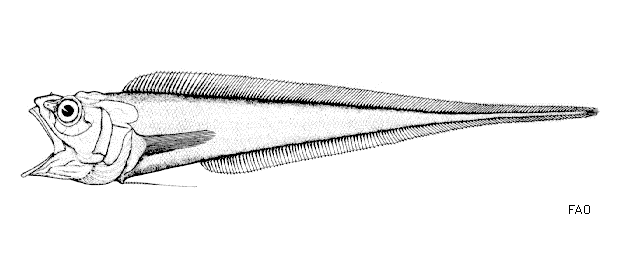| Ophidiidae (Cusk-eels), subfamily: Neobythitinae |
| 28.7 cm SL (male/unsexed) |
|
bathydemersal; depth range 295 - 815 m |
| Indo-West Pacific: Bay of Bengal to the Philippines. |
|
Dorsal soft rays (total): 140-158; Anal soft rays: 114-133. Prominent head and body with an attenuate caudal part; head bones with large, thin crests; eye equal to or greater than length of snout; opercular spine broad, flat and weak; basibranchial with 1 median and a pair of tooth patches; long gill rakers on anterior arch 14 to 23 (Ref. 34024). Pseudobranchial filaments 7-12; sagitta most often thick with flat dorsal rim (Ref. 34024). |
| Common species (Ref. 34024). Oviparous, with oval pelagic eggs floating in a gelatinous mass (Ref. 205). |
|
Not Evaluated
(Ref. 96402)
|
| harmless |
|
Source and more info: www.fishbase.org. For personal, classroom, and other internal use only. Not for publication.
Page created by Jen, 05.08.02,
php script by kbanasihan 06/09/2010 ,
last modified by
dsantos, 20/08/10

